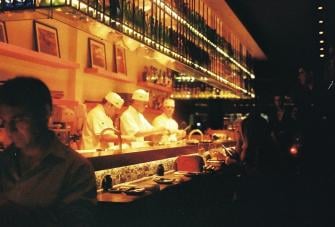How to Get Your Outdoor Dining Area Ready for Winter
Significant portions of the UK are still grappling with high rates of infection, as the COVID-19 pandemic looks set to linger throughout the autumn and winter.
Yesterday, the Scottish Government announced that all pubs and restaurants across the central belt - including Glasgow and Edinburgh - would be forced to shut for a period of 16 days. Throughout the rest of Scotland, venues will be able to remain open, but will be unable to serve alcohol indoors. And today, there is speculation that the same rule may be applied to parts of the North West of England as soon as Monday.
Is outdoor dining a lifeline?
Even in parts of the UK that have so far avoided high rates of infection, ongoing restrictions, like the rule of six, mean that hospitality venues are largely unable to open their dining rooms to maximum capacity.
While outdoor dining has been a lifeline for many struggling restaurants, autumn is now in full swing. As people begin to don their jackets and scarves, the question is whether anyone will still want to eat outside in the cold?
To help you prepare for the colder months, we looked into how businesses can master the art of al fresco service, even during the colder months. By applying these learnings, creating a warm, inviting, and COVID secure outdoor space is entirely possible.
Four steps to prepare your outdoor seating area
Research local regulations
Before rushing to build your perfect outdoor enclosure, you need to look over local restrictions. Many local authorities are accommodating businesses during this time, but you risk fines and closure if you do not comply with guidelines.
During the initial hospitality reopening in July, many local authorities moved to permit outdoor dining on pavements outside venues for a limited period of time. Recently, Westminster Council has announced it will extend its "al fresco" law throughout October, and other councils are set to follow suit.
Before extending your dining area onto the pavement, make sure your plans are fully compliant with local regulations.
Insulate
You want to add as many barriers as you can. This will help retain heat and block wintery gusts that cut straight through any jacket.
For the autumn, you may only want to install plexiglass windscreens or partial walls. But for the winter, and particularly in northern areas that experience heavy winters, you may need to include a roof to keep in the heat after the sun goes down.
Heaters can be very effective, but you need to keep safety in mind. While gas is certainly dangerous, even electric heaters can cause a tent to melt or even combust. First, make sure your heating method complies with all regulations. After this, you need to think about the cost and effectiveness of different heaters.
Portable gas heaters will be what most restaurants use for their temporary outdoor seating areas. These are effective, but some do not concentrate heat toward guests. Also, overhead propane heaters can only be used for a single table, especially in an era of social distancing.
You can also go with tableside electric heaters, but those have the same challenge as gas ones. You will need one for each table, which can be expensive.
Depending on the size of our space and the local regulations, you would be best to use a space heater. If you can add walls and a rough to your patio, you will be able to keep the dining area warm well into the start of winter.
Blankets will also be useful, so keep them close by. Even better, place one at each table to show your guests you care. This little act may be what encourages people who walk by your outdoor seating area to dine with you and will speak to your dedication to customer service.
Ventilate
In addition to Covid-19, other seasonal illnesses will become more prevalent as the temperature drops. Proper ventilation is a core part of preventing germs from spreading in your restaurant.
When constructing an outdoor patio, be sure to include open windows or doorways. Additionally, review your local laws so you can buy the right enclosure. Some councils allow for fully inclosed tents, but they can only accommodate one party at a time. If you install these structures, you still need adequate ventilation and thorough cleaning between meals.
Related to this, you may need to prohibit smoking from your outdoor area. Manchester is one local authority that has already banned smoking from outdoor seating areas.
Keep it lively
Now, more than ever, people want to feel some semblance of normal life. Going out to eat is a fun occasion, and you want to make sure your restaurant provides that experience despite all the Covid-19 precautions.
That all starts with creating a welcoming atmosphere. Staff members should be upbeat and provide fast service, especially because no one wants to sit around waiting in the cold. In times like these, the last thing you want is restaurant complaints or bad experiences
With the holidays approaching, now is an excellent time to use music and decorations to create a fun, cosy space. Music not only helps us relax, but it can also inspire diners to try themed dishes. For example, if you’re serving warm Glühwein, you can play German holiday music to add to the experience. Consider hanging wreaths and garland or providing hats and other costume pieces for your employees.
Can al fresco dining work in the UK?
Despite the miserable weather, al fresco dining absolutely can work in the UK, provided venues are able to create warm and inviting settings for drinkers and diners. Outdoor activities are common in Scandanavia throughout the winter months, suggesting it's entirely possible to create an outdoor dining culture here in the UK.
The key is ensuring that guests are sufficiently comfortable, and that your venue has the right technology to master outdoor service.
To get your business ready for the autumn and winter, speak to one of our consultants today exclusive apps designed for COVID-19 resiliency for the hospitality sector.



